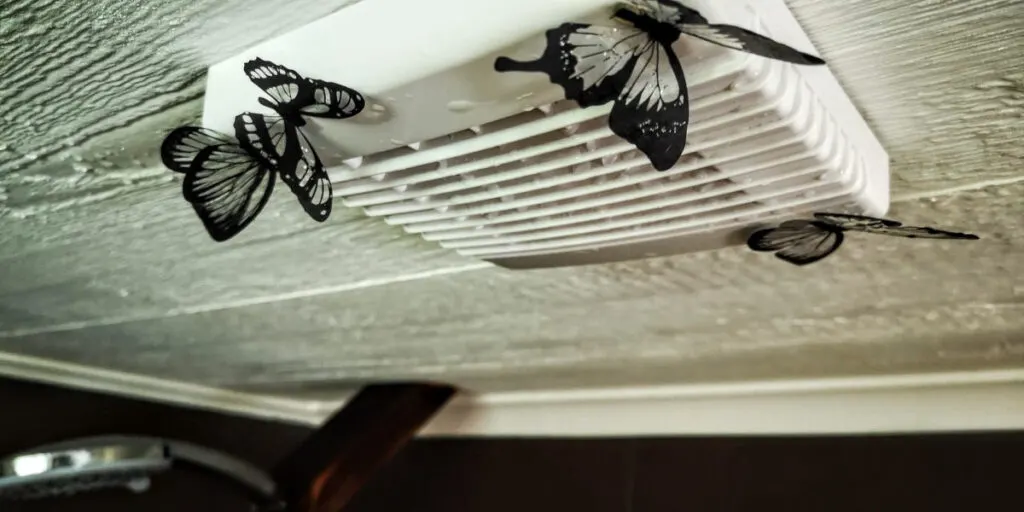Basements are notorious for smelling musty and developing dampness. But this is because the majority of the time, they lack windows, and so there is no proper ventilation. You can use the following tips to reclaim your basement space and make sure it’s not growing mold or mildew that could be harmful to your health or even to the basement itself.
What Is Ventilation?
People often get confused as to what constitutes ventilation. For example, they believe that installing dehumidifiers is an acceptable form of ventilation because they remove moisture from the air. Others use air purifiers.
However, neither of these options actually ventilate a space.
Ventilation involves fresh air entering a space, and stale or moist air must be removed. Unless both of these requirements are met, then a basement will not truly be ventilated.
1. Install an Exhaust Fan in the Basement

Arguably, the best technique for ventilating your basement is to install an extractor fan and vent it to the outside.
However, you cannot vent your basement into a closed space, including another room in the house or crawl space.
This rule is as per section M1501.1 Outdoor discharge of the International Residential Codes (IRC), which states:
The air removed by every mechanical exhaust system shall be discharged to the outdoors in accordance with Section M1504.3. Air shall not be exhausted into an attic, soffit, ridge vent, or crawl space.
IRC 2018
Exhaust fans will move moist and stale air outside the house, and as a result, the air pressure in the basement will drop, drawing in fresh (or at least fresher) air from other parts of the house or through cracks and holes in the house’s structure.
It is absolutely vital that an exhaust fan is installed if there is a bathroom with a shower or a bath in the basement. Don’t be fooled by the false information on the internet about ductless fans. It must be vented outside to be effective.
Be sure to select a quiet fan, and one that is rated for continuous ventilation.
2. Employ a Mixed Ventilation Strategy
Yet another alternative is to install a combination of both negative pressure ventilation and positive pressure ventilation.
You will both pump fresh air into the basement and remove stale and moist air by venting it outside of the house.
You get the benefits of completely clean and fresh air, and the moist and stale basement air is not introduced into the rest of your home. In addition, the positive pressure environment created by
While this is an ideal system, it is not necessarily the most cost-effective as you would have to set up both the extractor fan and venting and the positive pressure ventilation system.
3. Keep the Basement Door Open

A simple and free solution to ventilating your basement is just to leave the door open. The airflow that exists within the main part of the house will extend to the basement and circulate the air.
An open door allows fresher air to enter the basement and stale and moist air to be removed from the basement.
It is a form of passive or natural ventilation, and while free, it is not the most effective option.
If you plan to leave your basement door open, the direction in which the basement door swings can make a difference, with an outward swinging door being more likely to interfere with hallway traffic.
Some people keep their basement doors closed for safety reasons, i.e., children and pets. However, if this is your concern, you can try installing a screen door over your basement door, which you can then keep closed without interfering with the airflow.
Another option is to set up a baby gate at the top of the basement stairs.
4. Put Vents by the Basement Door
If you really do not like the idea of leaving your basement door open all the time, another possible way for air to enter the basement is to install vents in or above the basement door.
This provides a way for air from the main part of the house to enter the basement and can also act as a point of egress for moist and stale basement air.
Keep in mind that you will need some kind of fresh air supply vent in the basement in order for this to work.
Installing vents by the door in conjunction with an exhaust fan can improve the effectiveness of both techniques.
Sometimes, the design or layout of your house does not allow for vents to be installed above the door. In such a case, you can investigate installing them in the wall next to the door. Just make sure that you check if it is a load-bearing wall before cutting holes into it!
Another option is to install a louvered basement door.
5. Turn on the Whole House Ventilation
Often, houses will have a whole-house ventilation system, but the system will not supply the basement. However, this doesn’t mean that it will not help to ventilate the basement; it just means that it will not be as effective as if it extended to the basement.
If you do not keep your house ventilation on permanently, then you should come up with a regular schedule when it is on to provide time for your basement to circulate its old air out and draw new air in.
Related article: Ventilate rooms when painting
As you can imagine, using your whole house ventilation system as a way to ventilate your basement will work best if you leave the basement door open or if you install louvered vents by your basement door.
As pointed out earlier, it is vital that there is some kind of fresh air supply vent in the bathroom. Otherwise the ventilation system will not draw the basement air up.
6. Use Standard Fans or Install Ceiling Fans

In a closed system, i.e., a sealed basement, setting up a standard fan or installing a ceiling fan will not provide ventilation; it will only move the same air around the basement.
This can make the basement feel more ventilated than it would with stagnant air, but it doesn’t actually serve the correct function.
However, you can use the fans to improve the effectiveness of other techniques, especially if you install them or set them up in strategic positions.
The open door, door vent, or whole house ventilation techniques will benefit most from being used in conjunction with fans.
Related Article: How To Move Cold Basement Air Upstairs
7. Convert Your Old Furnace Chimney Into a Vent
If you have an older house and you have removed the old furnace and replaced it with a modern heat pump, then instead of blocking up the old chimney, why not convert the old furnace chimney into a handy basement vent?
The chimney vents directly outside, it does not require any new holes to be cut, and you can use it for both natural and mechanical ventilation options.
You can simply open it up and rely on the natural flow of air, or you can install an extractor fan in the chimney vent for mechanical ventilation.
Another option is to use a wind-powered vent (amazon). However, it is important to keep in mind that unless you install a damper to control the airflow it will cause excessive ventilation during the winter.
It makes achieving effective ventilation a lot cheaper because you only have to buy and install the extractor fan or wind turbine vent.
8. Organize Your Basement
Organizing your basement may seem like an odd technique for providing ventilation, and that is because it does not provide ventilation. Then why include it in this list?
Well, organizing your basement is a great way to improve whatever ventilation you already have or that which you decide to install.
A basement packed with countless boxes or old furniture will be much more difficult to ventilate, especially with the open door, door vents, whole house ventilation, and fan techniques.
Taller items will be more problematic, as will anything that blocks the direct path of the extractor fan, basement door, vents, etc.
You want the best possible airflow path in the basement, and obstacles will create turbulence and make it more difficult for stale and moist air to be removed.
9. Use a Positive Pressure Ventilation System in the Basement
Installing an extractor fan is also known as negative pressure ventilation. An alternative solution to ventilating your basement is to install a positive pressure ventilation system.
This works on the opposite premise. Instead of the air being pulled out, creating a negative pressure that draws fresh air inside, a positive pressure ventilation system actively pumps fresh air into a space, in this case, the basement.
This increases the air pressure in the basement, forcing the stale and moist air out through the basement door and into the rest of the house, as well as through any cracks and holes in the basement structure.
As the stale and moist air is being forced into the other parts of the house, this technique is not as frequently used as the exhaust fan. If the building envelope is not airtight the moist air will be pushed into the house construction and over time that can cause serious damage.
Related Article: Ventilating a Room Without a Window (15 Practical Tips)





